A sweeping national effort to extend health coverage to millions of Americans will leave out two-thirds of the poor blacks and single mothers and more than half of the low-wage workers who do not have insurance, the very kinds of people that the program was intended to help...
Those excluded will be stranded without insurance, stuck between people with slightly higher incomes who will qualify for federal subsidies on the new health exchanges that went live this week, and those who are poor enough to qualify for Medicaid in its current form, which has income ceilings as low as $11 a day in some states.
“The irony is that these states that are rejecting Medicaid expansion — many of them Southern — are the very places where the concentration of poverty and lack of health insurance are the most acute,” said Dr. H. Jack Geiger, a founder of the community health center model. “It is their populations that have the highest burden of illness and costs to the entire health care system.”
|
Every state in the Deep South, with the exception of Arkansas, has rejected the expansion. Where the Poor & Uninsured Live More than half of the nation’s poor and uninsured live in states that are not participating in the expansion of Medicaid, and the share among blacks is even higher.
0 Comments
This story originally appeared in the Sept/Oct edition of Talk Business Arkansas. While many Delta communities are struggling to survive, Will Staley and Terrance Clark are working to make sure at least one of them thrives. Staley recalls his first impressions of Helena, Arkansas, a city he first visited during his youth in the company of his parents, Jerry and Carolyn Staley. The city made an impression on him even then, with its bold Delta colors, hand-painted signage and a history rarely seen in suburbia or metropolitan America. “I knew when I first came here that there was something mysterious and even romantic about this city on the Mississippi River,” said Staley. “I saw potential for growth.” THE BIRTH OF A NON-PROFIT
Since 2009, Staley and Clark have been working to unleash that potential. These natural leaders are taking strategic measures to revitalize Helena’s economy and community through their work at Thrive, the non-profit they cofounded. You could say that Staley and Clark met by design. Fellow students at the Kansas City Art Institute, the two became friends and found they shared an interest in not only design projects but also in helping underserved segments of the population. After graduation, the two went separate ways but kept in touch. Clark remained in Kansas City, gaining work experience, while Staley pursued a Master’s of Industrial Design at New York’s Pratt Institute. Feeling “larger responsibilities as a young professional,” Staley settled on a thesis project through which he could use design to provide community support. He aptly christened his vision “Thrive” and chose to implement it in Helena, the Delta gem that had first tugged at his heart some years before. With a poverty rate at 34.7% and a 50% loss of population since 1960, Helena is certainly a candidate for improvement. At the same time, it’s a place undergoing a renaissance, according to Staley. As “Thrive” progressed, Staley and Clark conversed regularly about the project and about their mutual visions for helping communities. Around the time of Staley’s graduation from Pratt, Clark entered the University’s Master of Design Management program. These friends became roommates and began collaborating on a business plan that would transform “Thrive” from a thesis project to a real world, non-profit business. “Terrance went to Pratt to become equipped to ‘speak suit’ as folks from his program would say,” joked Staley. “It worked out, and we’re still working away.” In addition to their education, both gained early on-the-job experiences. While Clark completed his studies at Pratt, he also did page layout for a magazine and “slung pickles” at the Union Square New York farmer’s market. Staley, on the other hand, earned design experience through an internship for the Smithsonian Institute, a year-long fellowship with the William J. Clinton Foundation, and by taking on freelance graphic design projects. By 2009, the designers were ready to implement their plan. “After many visits to and from, we left Brooklyn and moved to Helena,” recalled Staley. “We fed ourselves with Terrance taking on strategic planning contracts with local non-profits and with me taking on graphic design and marketing contracts with local small businesses and non-profits. At this point we were a young, inexperienced non-profit trying to figure out how to gain trust in a new community and take the first step towards fulfilling our vision.” THE LAUNCH Since its formal launch from its perch on Cherry Street in Helena, Thrive has successfully offered the local community affordable strategic planning and marketing services. The 501(c)3 brings in money from about seven different sources that include a combination of public and private grant funds, corporate donations, family foundations, and good old hard work. “We provide below-market rate branding and marketing work to regional NPOs and small businesses,” explains Staley, of just one of the firm’s unique revenue models. Being a non-profit doesn’t mean Thrive’s founders aren’t also running a business. “We make money from pretty much any rock we can pull money out from under,” said Clark, who is quick to defend their methods in a county with a history of abuse of non-profit funds. “We’re not seeking grant money to pay our salaries, and we know that for this to exist [long-term], we have to work as hard as we can to make sure it’s sustainable.” After just one year of passing muster, Thrive had already caught the attention of city managers who approached Staley and Clark about running a small business incubator, the Helena Entrepreneur Center (HEC). Asked by Doug Friedlander, former Teach For America alum and current Phillips County Chamber of Commerce director, and other city leaders, the two stepped up to fill this new role. Originating from the Phillips County Community Strategic Plan, the HEC is a unique resource for new and struggling entrepreneurs. Thrive works within HEC to implement its Start-Up Program, a one-year course to teach small business owners how to start a business from the ground up. “We just finished our three-year grant from the Walton Family Foundation to get it rolling,” said Clark, who formulated the program’s curriculum and instructs the two-phase program with help from fellow business experts provided through the Small Business Administration, the local chamber and area businesses. “That’s how we’ve done everything at Thrive,” Clark elaborated. “For those things I might not have 40 years experience at, we find someone to help. We have this curriculum – these lectures I’ve prepared – and we have our Chamber director come and talk about business retention and expansion. A lot of people don’t understand the amount of work it takes to run a business. If you’re a welder, you’ve got to be more than just a good welder – you need to be an accountant, know how to do paperwork, stuff like that. Nothing is foggy by the end of this class.” The start-up class creates a filter of sorts, Clark explained. “If they make it through the eight-week class, the chance of their sticking with it is higher.” To date, 66 people have signed up and taken at least one consulting session, 42 have completed the eight-week class, and Thrive is working with only eight new businesses and six existing businesses. In Phase II, Staley and Clark roll up their sleeves for more tailored interaction with entrepreneurs. “I’ll do everything from go with them to the bank to help them set up their bank account for the first time to engineering spec drawings for a patent for them,” said Clark. “Whatever we can do, we do for these people who have given their commitment to us.” ECONOMIC & COMMUNITY DEVELOPMENT Staley and Clark believe that economic development goes hand-in-hand with community development. In 2011, they designed and implemented Helena Second Saturdays, a monthly family-friendly event held April through September that provides a fun marketplace for local merchants, artisans and musicians. “From 8 a.m. until 8 p.m., there is something fun going on all day on Cherry Street,” says Staley. “The downtown revitalization campaign leverages the area’s cultural strengths and its people to create economic impact through development of tourism and unification of the community.” Second Saturdays also include a farmers’ market, a shopping initiative called the Cherry Street Shop-Hop, and in the evening, the Downtown Street Fair. “The street fair is an all-hands on deck, community-pride lifting event for an area that many times gets bogged down in negativity,” said Staley, who points out the positives that have come from the program. “We’ve grown the crowd from 150 to 600 and we will continue to monitor the economic impact among shops and market vendors. In 2011 and 2012, sales among open shops grew 150% on Second Saturdays.” When it comes to thriving, the most important piece of the puzzle is people. Helena is part of an effective program to bring people in, but mostly for the short-term. Teach for America brings in top graduates from outside to teach in rural areas, but only a few of them have made Helena their permanent home. These few have been key, however, and have included TFA alum, Doug Friedlander, the current director of the Phillips County Chamber of Commerce. According to Clark, plenty of TFA alums would stay if there was something for them other than teaching. “We’ve just had another wave of people leave,” he said. “That’s the thing. It’s not in TFA’s mission to get people to stay here, to get them to register to vote here, to get them to city council meetings here,” he said. To address retention, Thrive hopes to launch in 2015 The Impact Project Program, a year-long opportunity for TFAs who don’t want to continue teaching in the area but do want to make an impact in the Delta. The program would offer free room and board to program alums after their second year of teaching. Marketing to TFA alums just makes sense. “They’ve already cut the mustard, so to speak. They already know this place,” said Clark. “We don’t need 200 of them to stay. We need 10 of them to stay, because they’re going to be the most important ten.” With Impact, the two also plan to reach out to graduate schools outside the state that require field work. The program will be ideal also, Staley indicated, for Helena natives who are within the TFA age range who have moved away but now want to come home. “We want to offer this to anyone in the United States that wants to create positive change,” said Staley. Living in the Delta isn’t always easy, but these Thrive founders and business entrepreneurs have made it their home. “There are market gaps here that need to be filled. With more people coming here for startups and with TFA folks here, this place is turning,” said Staley. Clark, too, wants to see other visionaries get their start in his adopted hometown, and throws them a gauntlet. “Entrepreneurs should see Helena as a land of opportunity,” he said. “It’s big enough to fit 50,000 comfortably, and we’ve got 12,900,” he said. “There are a lot of piles of gold in this town. They just need to be polished.” How many people do you think live in small towns or rural areas in the South? Let me be more specific - how many people live in counties with fewer than 60,000 people? Let's make it multiple choice, and I'll give you a hint -- this number is comprised of the population of 753 qualifying counties. A. 1 million B. 5 million C. 10 million D. 17 million The answer is D. 17 million. Essentially two New York Cities (just the five boroughs). Together, the Southern states - not including any counties in Missouri, Florida, or Texas - come to around 50 million in population. What if we go more rural? How about counties with fewer than 20,000? That has to be basically nothing, right? It's the population of the entire San Francisco metro area - 4,500,659 over 369 counties. I'll say that again -- the population of the more rural South is equal to the population of the ENTIRE Bay Area. I know the Delta Regional Authority and Appalachian Regional Commission are out there along with some sub-regional groups, but where's the ecosystem? Where's the collective effort? There are more and more efforts coming on line to increase quality of life for all people in large cities like Boston and Chicago and even smaller cities like Denver and Kansas City. Where's the equivalent effort in the small town South?
If you live in Orangeburg, SC; or Vicksburg, MS; or Dyersburg, TN, how are you going to get a leg up? In all honesty, odds are you aren't. While the world marvels at the wonders of New Orleans, Nashville, Atlanta, and others, another generation is slowly being entrapped a half hour's drive away. This week, the Walton Family Foundation gave $6 million to the Philadelphia School Partnership to promote the growth of excellent schools. This announcement in and of itself was not remarkable. Major gifts and attention are regularly heaped on urban school districts. Their leaders become nationally-recognized advocates. Through fits and starts, many urban districts are improving; and the money and attention is well deserved. But what was just as striking to me is the announcements that were not made this week. Mark Zuckerberg did not show up in the Mississippi Delta to give the keynote at the Clarksdale Municipal School District's annual convocation. The Gates Foundation did not announce a partnership with Greene County (NC) Schools in an effort to redesign small town schools. Even writing those felt weird. They're so unlikely as to seem absurd. If we make the assumption that all lives have inherently equal value, then we must acknowledge that there is something amiss. If you're a poor kid growing up in New Orleans, you have at least have a shot at attending a good school. If you're in Itta Bena, MS; the odds are much, much less favorable. And yet, the lives of both children matter equally; we should treat them as such. And where exactly are the children with the greatest need for a great school? The small town South. In the United States, there are one hundred eleven counties where more than 50% of children live in poverty. Of those one hundred eleven, seventy-eight are in the South (highlighted below). Southern Counties with More Than 50% of Children under 6 Living in Poverty Source: Measure of America So three out of four counties with insane child poverty are in the South. (If you drop the barrier to 49%, twelve of the next sixteen are - yup - in the South.) And now we also know that poverty deeply taxes cognition.
This is just the latest revolution in a lengthy cycle, a cycle with no foreseeable end. Those counties are exclusively rural. Not a single one is within forty five minutes of a major metro area. There is no hospital with an excellent emergency room. There is no magnet school to apply to. In many places, there's not even a grocery store. It may sound insane, but that's the inescapable reality for tens of thousands of children. As a society, we value connectivity, knowledge, and novelty; it should come as no surprise that counties like those above have slowly receded from our consciousness. Or that we look cross-eyed at people who say things like "I work for a KIPP school in Helena, AR," or "I'd love to start a mobile health unit in Plymouth, NC." It is time for a coherent, regional effort to address these issues. It's the same problem across the region; we should treat it as such and get to work. It's time to destroy these notions and mindsets of what is valued and where we should therefore focus our energy. It's time to quit trying to make heaps of money or design the next great app or score the next great status job and do something about this. So here's our focal point: the oldest of those children growing up in poverty will graduate from high school in 2025. I have some ideas. I'm sure you do, too. And I'm certain that the folks living in these areas do. So why wait? Let's do something about this. The Housing Assistance Council (HAC) recently released a report about the state of people, poverty, and housing in small town America. It's full of great data, but most jarring to me was that showing counties that have experienced persistent poverty continuously since 1990. Yet another angle to the same story - if you're a non-white person living in a small town in America, chances are high you're living in poverty or in danger of falling back into poverty. I'll let them take it away: An increasing number of rural communities are experiencing persistently high poverty rates. These areas are often isolated Small Town Americans Maintain Astute Policy Priorities; Few Rely on Farming to Make a Living9/2/2013 The Center for Rural Affairs asked eight hundred small town Americans what policies would most advance quality of life in their communities. Here's what they said: The study also shines new light on a seismic demographic shift that's taken place in small town America over the past half century.
The Mississippi Economic Policy Center put out the first in a series of reflections on the state of racial equity in the post-March on Washington era. The full policy brief, assembled and distributed by the Economic Policy Institute, includes more in-depth data. A couple high(low?)lights:
As bad as the disparity is in Mississippi, though, it would be irresponsible to ignore the fact that this is a national problem.
Once again, EPI: Figure C depicts the black unemployment rate in Mississippi compared with the black unemployment rate in each of the other 23 states for which the black population is large enough to measure the unemployment rate with CPS data. It shows that Mississippi has the ninth-highest African American unemployment rate among these states. An interactive version of this map can be found here. From the Daily Yonder: There are 263,000 fewer jobs in rural counties today than in 2007, a decline of 3%. The number of unemployed has increased by 198,000 in the last six years. (The difference between the loss of jobs and the increase in unemployment is a result of fewer people looking for work in those counties, through relocation, death or giving up the job search.) A few more county-level statistics (stats are # of jobs lost over the past six years):
This map and these figures, though jarring, are not terribly surprising. To the average American, there is little that exists to attract him or her to a rural community, much less the rural South, which means that there is certainly little incentive for a company with even minimal mobility to stick around. Familial ties and isolated schemes simply aren't enough to stop this job loss. When it comes to stopping the bleeding, I have yet to see any coherent strategies for the instigation of long-term development in the South, though some efforts elsewhere - most notably in Nebraska and in fossil fuel-driven economies like those in the Dakotas and Texas - seem to be making a real dent. In the South, though, there is simply no present rural equivalent to the coalitions devoted to economic growth in towns like Nashville and New Orleans. (No region-wide efforts that would improve quality of life for a similar number of people, that is.) If that doesn't change - and soon, we can expect the rural South to be much poorer than the rest of the country for a long time to come. O Centro de Integração de Educação e Saúde, or the Center for Integration of Education and Health, is a Brazilian non-profit with the stated aim of giving the poor greater access to advanced medical examinations (e.g. gynecology, gastroenterology, urology). Since 2008, the organization has leveraged connections with local communities, the private sector, and local government towards the treatment of over 100,000 patients. Being big believers in preventative medicine, they center their work around a foundational "Triad" of TREAT, PREVENT, and EDUCATE. Their tools include the following:
This type of intervention would be a great help to boosting the quality of preventative care in areas where diabetes, heart disease, and other preventable disorders have been left unchecked to decimate entire (mostly black, mostly poor) populations. If someone is already out there doing work like this, I'd greatly appreciate hearing about them in the comments, too. I found a story from Friday's All Things Considered about NC's new voter ID law absolutely fascinating. Here's a quick overview, per NPR: This week, North Carolina's governor signed a new law requiring a state-approved photo ID to cast a vote in a polling place and shortening the period for early voting. The move comes just weeks after the U.S. Supreme Court invalidated a key provision of the Voting Rights Act of 1965, which had required large parts of the state to get federal approval before changing voting laws. Gov. Pat McCrory, a Republican, says the new law will protect the state from voter fraud. Critics say it reverses crucial reforms designed to help protect the rights of African-Americans, young people and the poor. NPR's Ailsa Chang visited rural areas of North Carolina to report on how the changes could affect poor minority voters who live there. If left unchallenged, this policy will ultimately have a deeper impact in the state's rural counties; and per her journalism it's easy to see why. Ms. Chang does a terrific job supporting listeners in developing a sense of empathy for what it means to be a newly disenfranchised voter in Bertie County, NC. Her story is well worth a listen. Alberta Currie, 78, is flanked by her twin daughters, Brenda Bethea (left) and Linda Blue, outside their house in Hope Mills, N.C. Currie says she has voted at polling places since 1956, despite literacy tests and daylong waits in the days before the Voting Rights Act. Under North Carolina's new voter ID law, Currie will have to vote absentee if at all, because she can't get a state photo ID. Photo credit: Ailsa Chang, NPR
|
AboutOutlining the strengths, challenges, and opportunities present in the South. Archives
December 2014
Categories |


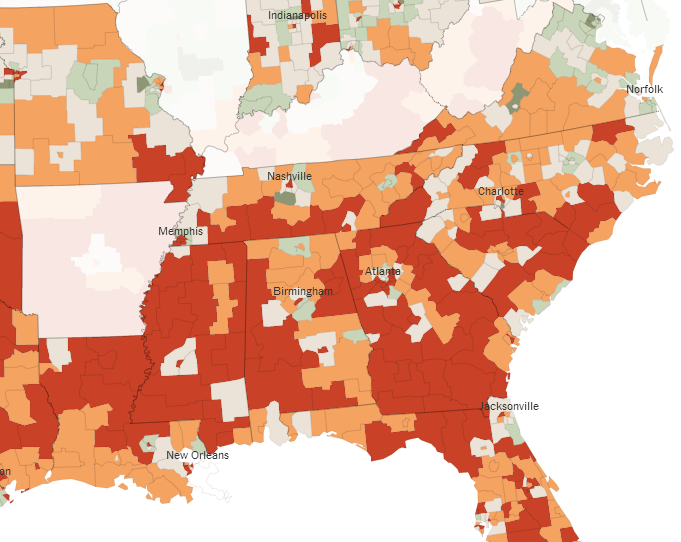

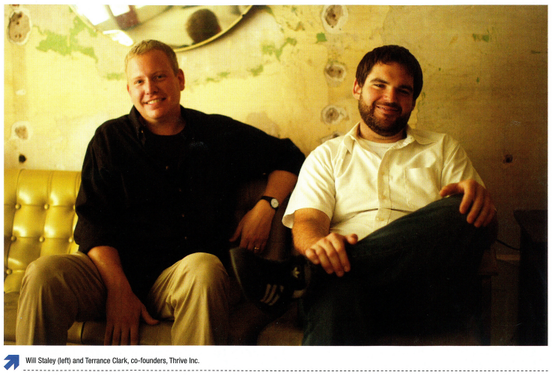


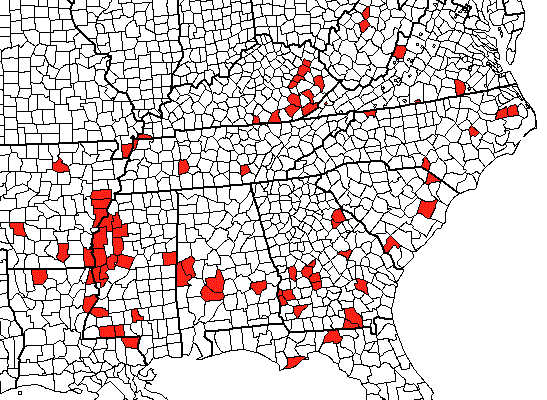
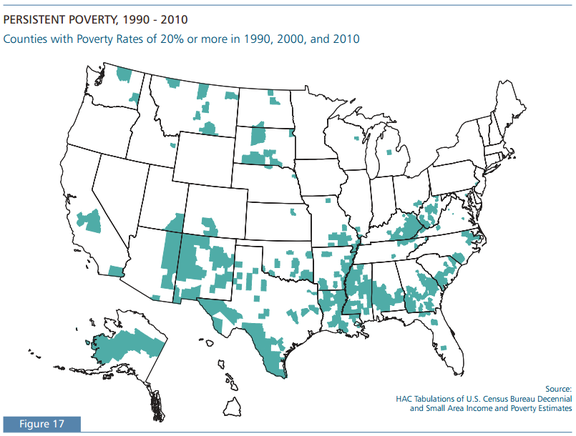
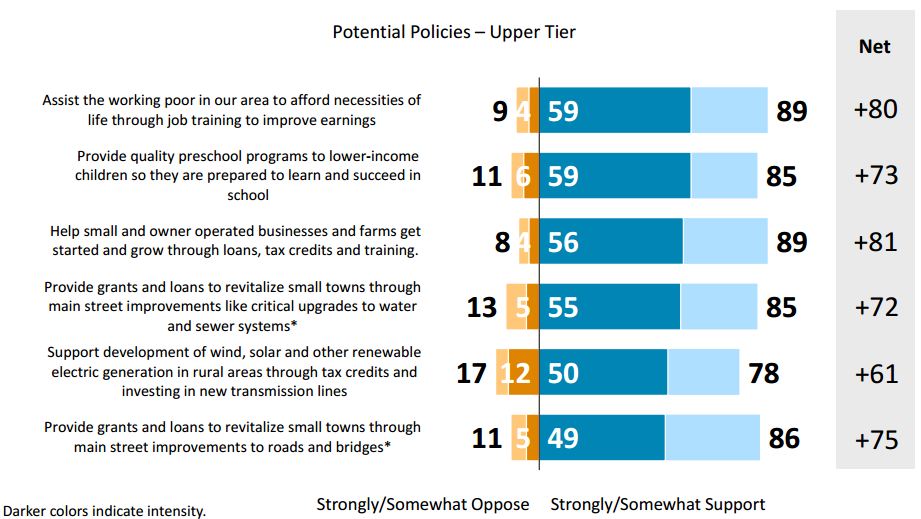
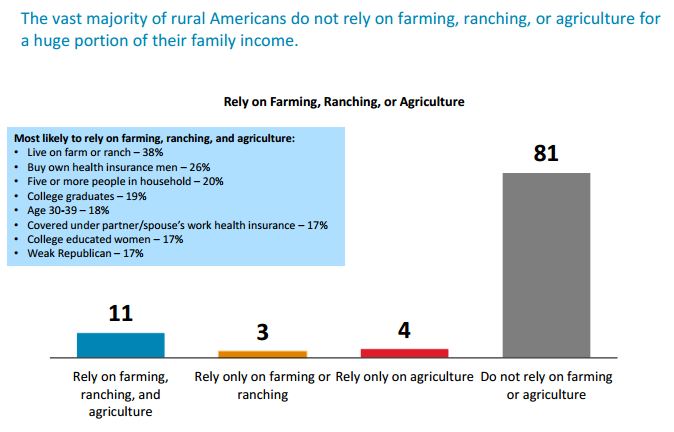
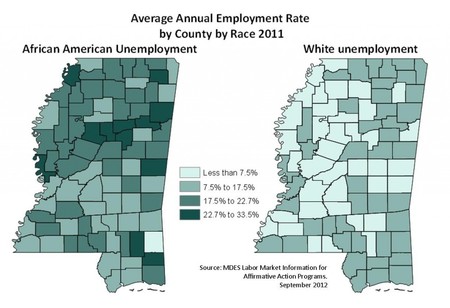
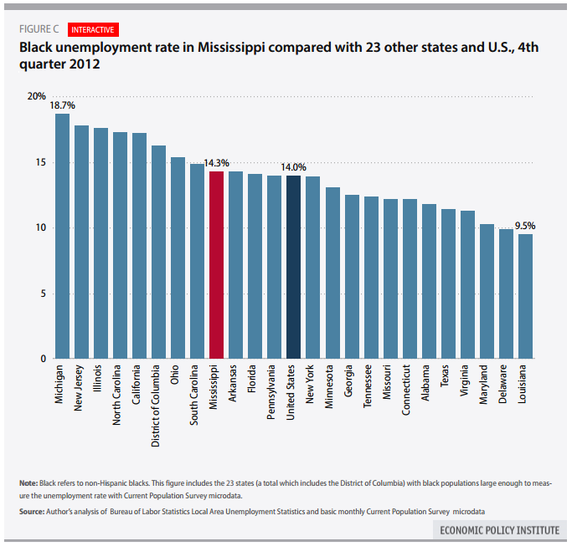
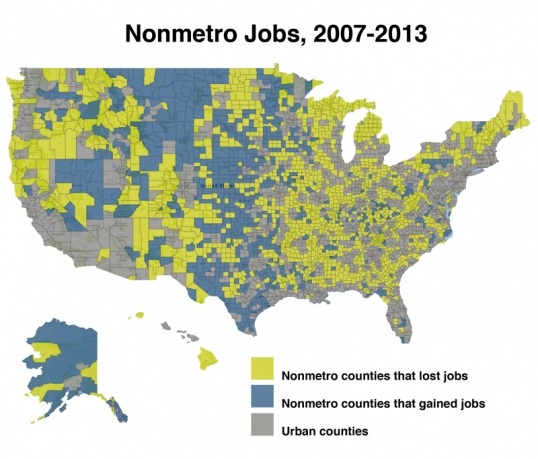

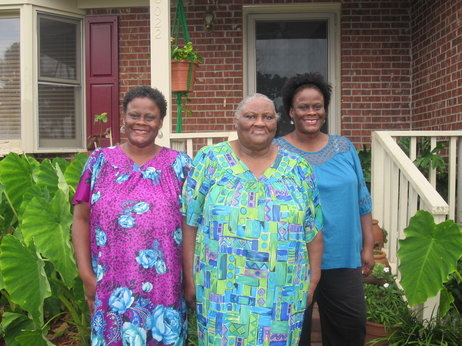
 RSS Feed
RSS Feed
